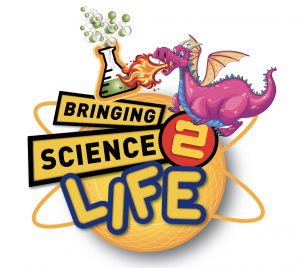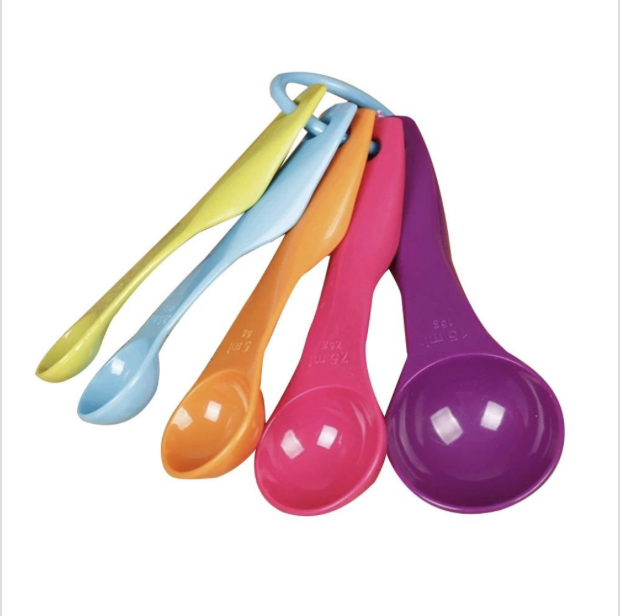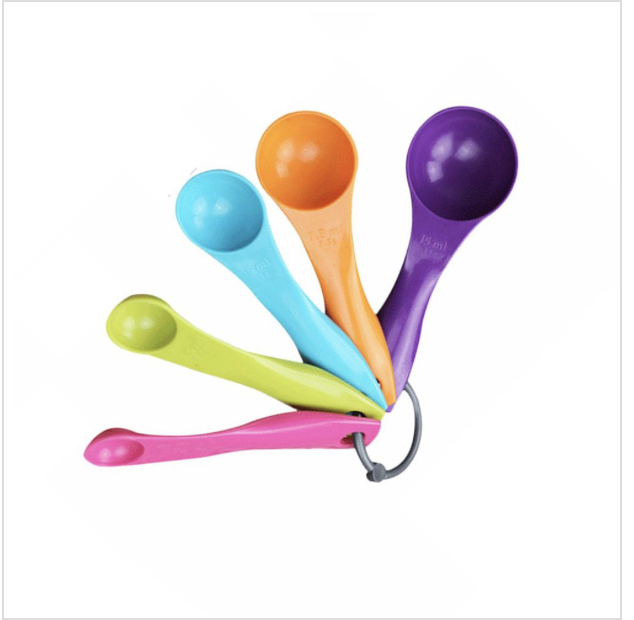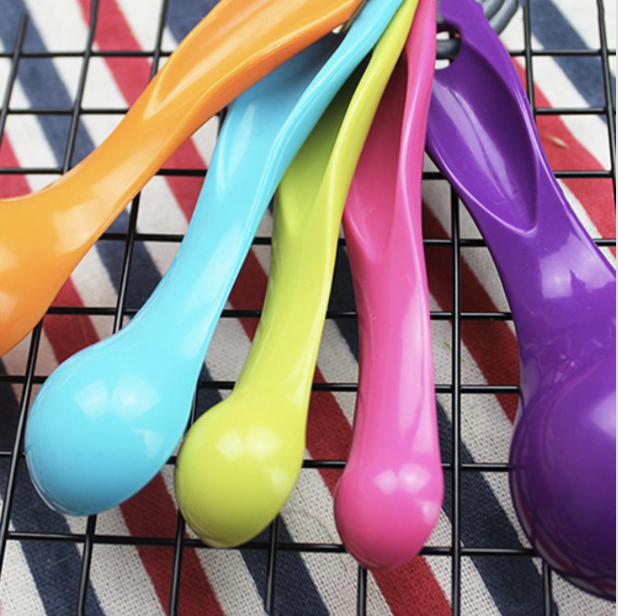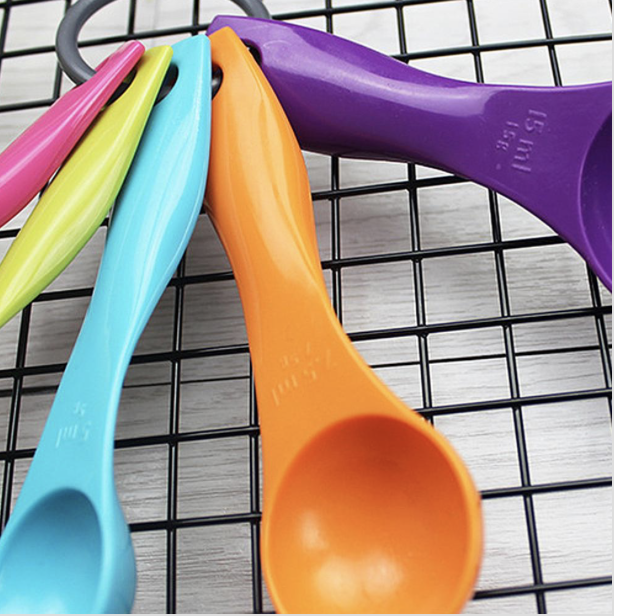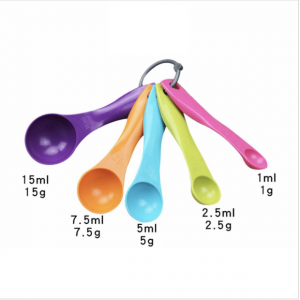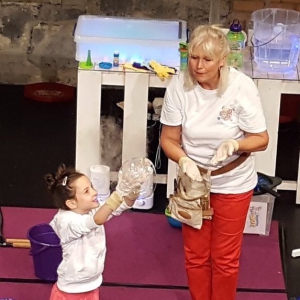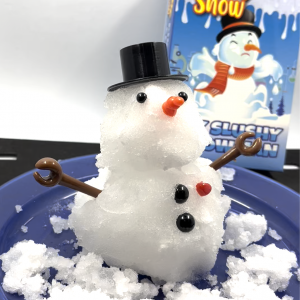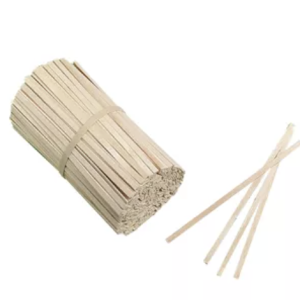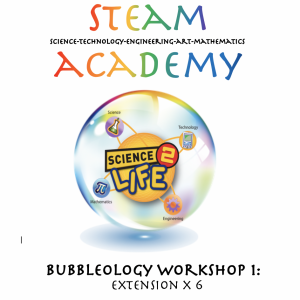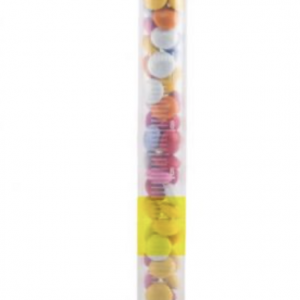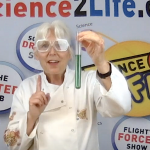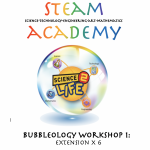Description
Colourful Measuring Spoons – 5 pieces
This plastic, colourful measuring spoons set consists of 1/2.5/5/7.5/15ml spoons
- Everything you need to accurately measure out flour, sugar, spices, herbs and lots more
- Includes five measuring spoons – with a quarter tsp (1 ml, 1 g), half a tsp (2.5 ml, 2.5 g), one tsp (5 ml, 5 g), half a tbsp (7.5 ml, 7.5 g) and one tbsp (15 ml, 15 g)
- Easy to read markings, with millilitre (ml) and gram (g) equivalents
- Colour coded and stain resistant, safe to use with the strongest of spices
Volume
Water, milk, flour, sugar, oil and many more consumables in the kitchen can be measured using:
- teaspoons
- tablespoons
- cups
- fluid ounces
- millilitres
- pints
- litres
Some are metric units and others are US standard measurements. The conversion of cooking measurements is a great way for your children to learn to measure. However going through the process of cooking is a fun hands-0n way to not only learn maths but all gain a whole range of skills and cover a wide range of curriculum topics such as:
- Emotional and social development
- Language skills
- Science
- Art
- Motor skills and physical development
- Social studies
- Mathematics
- Hygiene
SI Units
Scientists never just grab handfuls of chemicals and toss them together. Accurate, precise measurement is a fundamental component of good science. To standardise measurements across all scientific disciplines scientists developed the International System of Units, known as SI Units. Even with a standardised system, there is room for uncertainty in the laboratory. Minimising this uncertainty ensures proper understanding of a process or experiment.
Scientific measurements use units to quantify and describe the magnitude of something.
There are many different units for the measure of length: inches, feet, centimetres, etc.
Using common units, scientists from different countries and cultures can easily interpret each others’ results.
The current list of SI units are: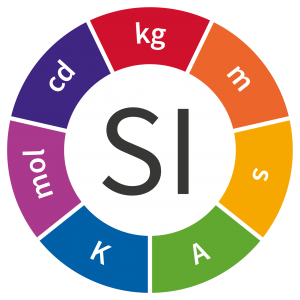
- Metres (m) for length
- Litres (L) for volume
- Kilograms (kg) for mass
- Seconds (s) for time
- Kelvin (K) for temperature
- Ampere (A) for electrical current
- Mole (mol) for amount of substance, and
- Candela (cd) for luminous intensity.
Rough Equivalent Volumes
ml: millilitres, tsp: teaspoon, Tbs: tablespoon, fl oz: fluid ounces
These are not all exact, but close enough for cooking:
| ml | tsp | Tbs | cups | fl oz | pints | quarts |
| 5 ml | 1 tsp | |||||
| 15 ml | 3 tsp | 1 Tbs | ||||
| 30 ml | 6 tsp | 2 Tbs | 1/8 cup | 1 fl oz | ||
| 60 ml | 4 Tbs | 1/4 cup | 2 fl oz | |||
| 120 ml | 8 Tbs | 1/2 cup | 4 fl oz | |||
| 250 ml | 16 Tbs | 1 cup | 8 fl oz | |||
| 500 ml | 2 cups | 16 fl oz | 1 pint | |||
| 1 litre | 4 cups | 32 fl oz | 2 pints | 1 quart | ||
| 2 litres | 4 pints | 2 quarts |
